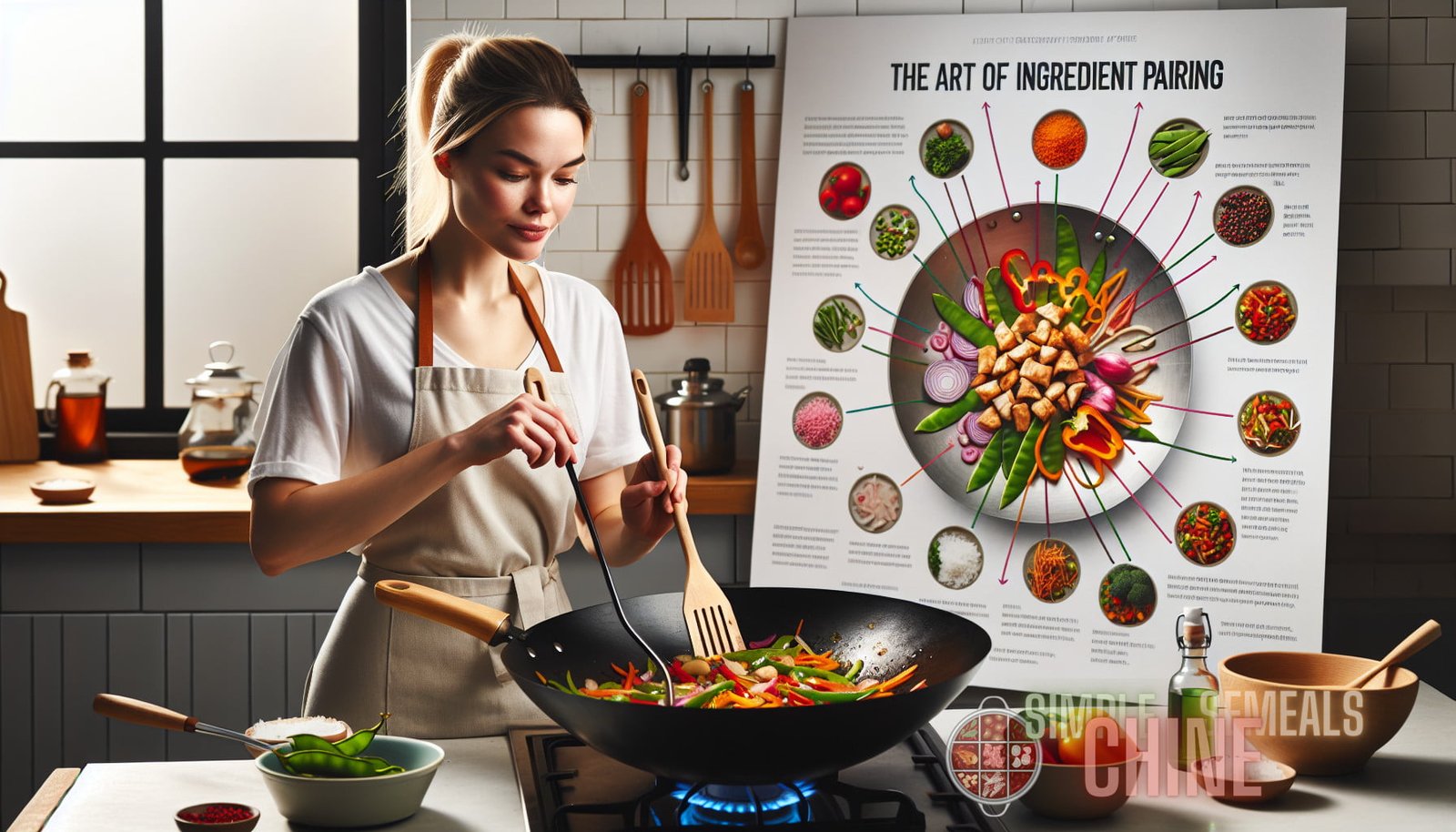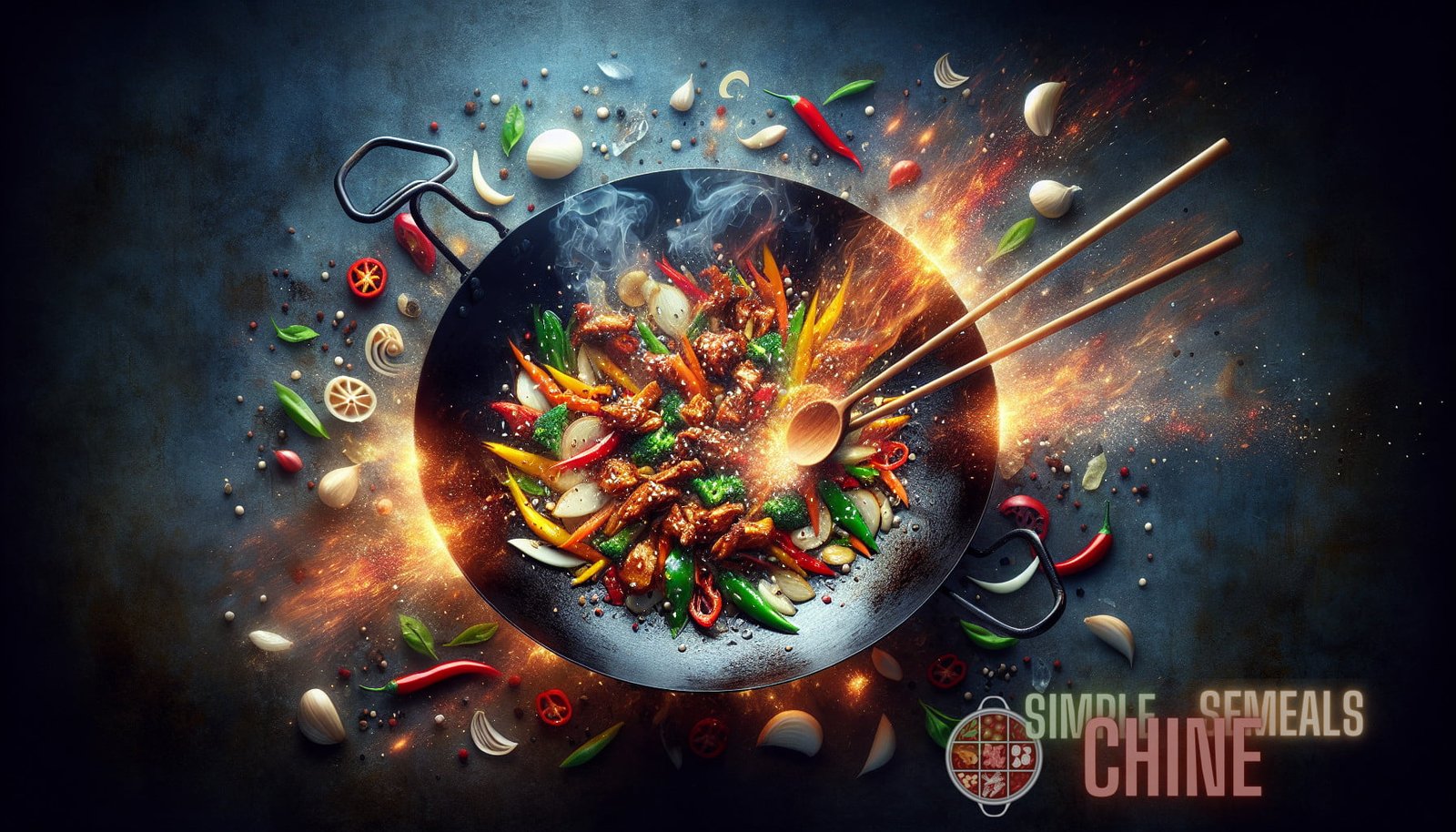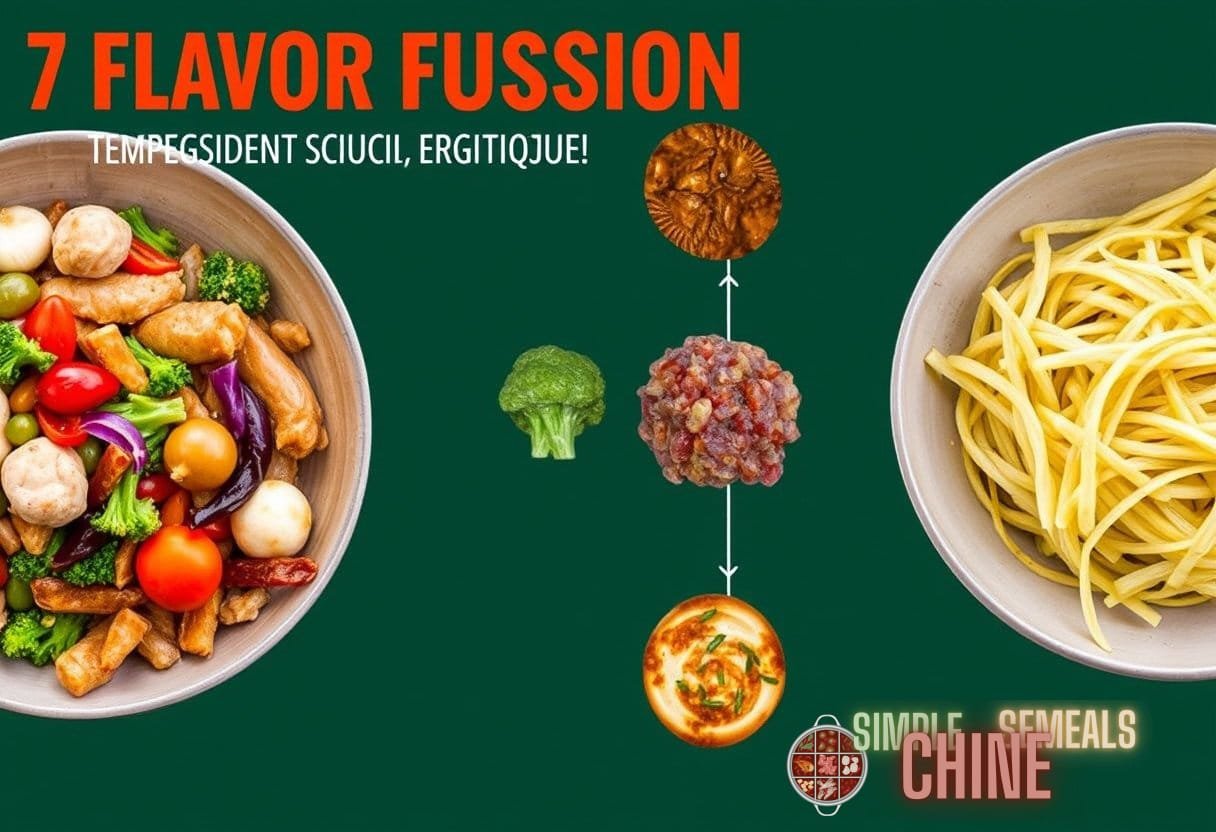Unveiling the Magic of Stir-Fry: Harnessing the Art of Ingredient Pairing for Extraordinary Flavor and Texture
Introduction
Stir-frying is a cooking technique that has been practiced for centuries in many Asian cuisines. It involves quickly frying ingredients in a hot wok or skillet while continuously stirring to evenly cook the food. This method is known for preserving the vibrant colors, flavors, and textures of the ingredients, resulting in mouthwatering dishes that are both nutritious and delicious.
In this guide, we will delve into the art of stir-fry and explore the key factors that contribute to stir-fry mastery. We will uncover the secrets behind ingredient pairing and its role in creating extraordinary flavor and texture. Whether you’re a novice or an experienced cook, this guide will provide you with valuable insights and tips to elevate your stir-fry game to new heights.The Fundamentals of Stir-Fry
Before we delve into the nuances of ingredient pairing, it’s important to understand the fundamental principles of stir-frying. Mastering these basics will serve as a solid foundation for creating exceptional stir-fry dishes. Here are some key points to keep in mind:
1. High Heat: Stir-frying is all about quick cooking over high heat. It allows the ingredients to retain their crispness and natural flavors. Make sure your wok or skillet is preheated before adding the ingredients. This ensures that they are cooked evenly and quickly without becoming soggy. 2. Uniformity: Cut your ingredients into uniform sizes to ensure even cooking. This is especially important when stir-frying a variety of vegetables and proteins together. Consistency in size will ensure that they cook at the same rate, resulting in a harmonious balance of flavors and textures. 3. Preparation: Preparing your ingredients before you start stir-frying is crucial. This includes marinating proteins, chopping vegetables, and having all your sauces and spices ready. Stir-frying is a fast-paced cooking method, and having everything prepared in advance will help you stay organized and focused. 4. Stir-Fry Sauce: The stir-fry sauce is a vital component that brings all the flavors together. It should be well-balanced and complement the ingredients in the dish. Experiment with different combinations of soy sauce, oyster sauce, hoisin sauce, and other Asian condiments to find the perfect blend for your stir-fry. Adjust the seasoning to your preference by adding sugar, vinegar, or chili sauce.
The Art of Ingredient Pairing
Now that we have covered the basics, let’s dive into the art of ingredient pairing and how it can elevate your stir-fry dishes to a whole new level. When it comes to stir-fry, the choice of ingredients plays a vital role in creating extraordinary flavors and textures. Here are some key factors to consider:# Textures
Stir-fry is known for its vibrant textures, with a harmonious combination of crispness, tenderness, and juiciness. Achieving the perfect balance of textures is the key to a successful stir-fry dish. Here are some guidelines for pairing ingredients based on texture:
1. Crisp Vegetables: Pair vegetables with contrasting textures to create a satisfying crunch. For example, pairing crunchy bell peppers with tender snow peas or water chestnuts can create an interesting contrast of textures. Experiment with a variety of vegetables to find your preferred combination. 2. Tender Proteins: Choose proteins that are tender and moist to create a melt-in-your-mouth texture. Tender cuts of beef, chicken, shrimp, and tofu work well in stir-fry dishes. Avoid using tougher cuts of meat that require longer cooking times, as they may become chewy and overcooked. 3. Juicy Ingredients: Adding juicy ingredients such as mushrooms, cherry tomatoes, or pineapple can add a burst of flavor and moisture to your dish. These ingredients also help balance out the flavors and textures of other ingredients in the stir-fry.# Flavors
Pairing ingredients with complementary flavors is essential for creating a well-balanced stir-fry dish. Here are some flavor combinations to consider:
1. Sweet and Savory: Combining sweet ingredients, such as carrots or bell peppers, with savory elements, such as soy sauce or garlic, can create a delightful contrast of flavors. The sweetness of the vegetables balances the savory umami flavors, resulting in a delicious stir-fry. 2. Salty and Spicy: Adding a touch of spiciness to your stir-fry can elevate the flavors and add depth. Pairing spicy ingredients, such as chili peppers or Sichuan peppercorns, with salty elements, such as soy sauce or fish sauce, can create a tantalizing combination that leaves your taste buds tingling. 3. Acidic and Fresh: Incorporating acidic ingredients, such as lime juice or rice vinegar, can brighten up the flavors in a stir-fry. Pairing them with fresh herbs, such as cilantro or mint, adds a burst of freshness and complexity to the dish.# Colors

Visual appeal is an important aspect of stir-fry, and the combination of vibrant colors can make a dish even more enticing. Here are some tips for pairing ingredients based on color:
1. Contrasting Colors: Pair ingredients with contrasting colors to create a visually stunning dish. For example, combining bright green broccoli with vibrant red bell peppers and yellow corn can create a visually appealing stir-fry. Experiment with different colorful ingredients to create your own masterpiece. 2. Monochromatic Colors: Alternatively, you can create a visually striking dish by sticking to ingredients of the same color. For example, a stir-fry with different shades of green, such as bok choy, snap peas, and green onions, can be visually pleasing. This technique works particularly well when using a single ingredient as the star of the dish.Stir-Fry Mastery: Putting It All Together
Now that we have explored the art of ingredient pairing, it’s time to put everything into practice and achieve stir-fry mastery. Here is a step-by-step guide to creating a perfect stir-fry:
1. Preparation: As mentioned earlier, preparation is key. Gather all your ingredients, chop your vegetables, and have your proteins marinated and ready to go. Preparing everything in advance will ensure a smooth and efficient cooking process. 2. Heat the Wok: Heat your wok or skillet over high heat until it starts to smoke lightly. This ensures that the wok is evenly heated, allowing the ingredients to cook quickly and evenly. 3. Add Oil: Add a small amount of oil to the wok and swirl it around to coat the surface. Use a high-heat oil with a neutral flavor, such as vegetable or peanut oil. 4. Start with Aromatics: Add aromatics, such as minced garlic, ginger, or shallots, to the hot oil. Stir-fry them for a few seconds until they become fragrant, but be careful not to burn them. 5. Proteins: Add your proteins to the wok and stir-fry them until they are cooked through. Make sure to keep the proteins moving in the wok to prevent them from sticking or overcooking. 6. Vegetables: Once the proteins are cooked, add your vegetables to the wok. Stir-fry them until they are bright, crisp, and tender. Remember to stir continuously to ensure even cooking. 7. Sauce: Add your stir-fry sauce to the wok and toss everything together. The sauce will coat the ingredients and bring all the flavors together. Cook for another minute or two until everything is well combined. 8. Finishing Touches: Add any additional ingredients, such as fresh herbs or garnishes, to the stir-fry just before serving. This will add a final burst of flavor and freshness to the dish.Conclusion
Stir-frying is an art that requires practice, patience, and an understanding of ingredient pairing. By harnessing the magic of ingredient pairing, you can create stir-fry dishes that are bursting with extraordinary flavors and textures. Experiment with different combinations, textures, flavors, and colors to create your own unique stir-fry creations. With time and practice, you will become a stir-fry master, delighting your family and friends with your culinary prowess.
For more tips and techniques on stir-fry mastery, check out this article on Simple Chinese Meals. It provides a comprehensive guide to mastering the art of stir-fry and taking your cooking skills to the next level.


